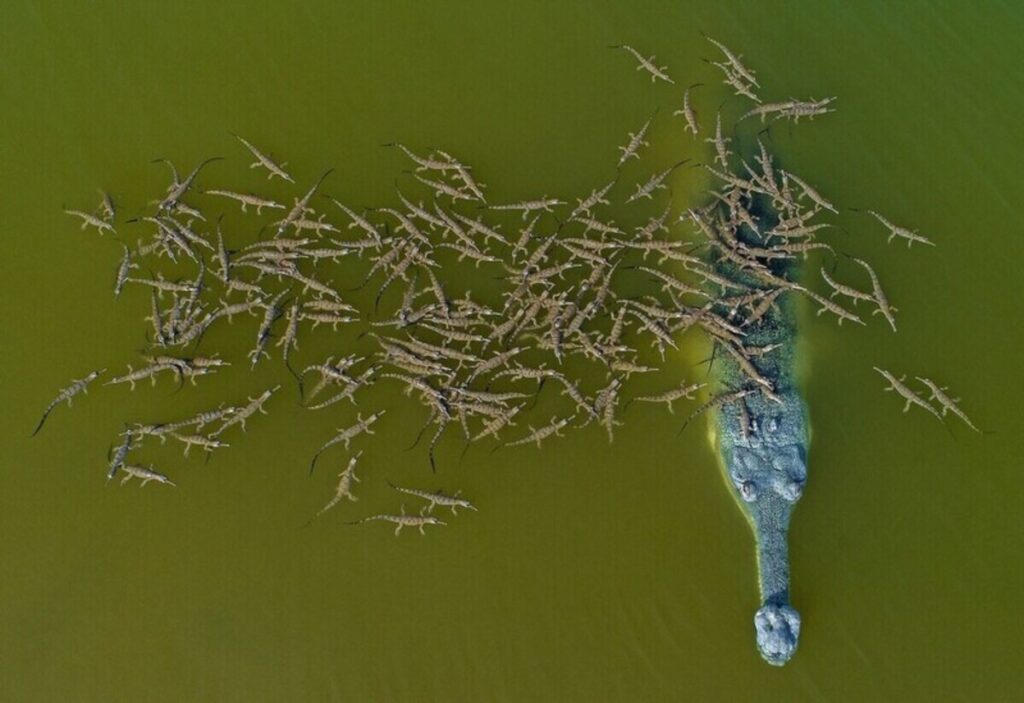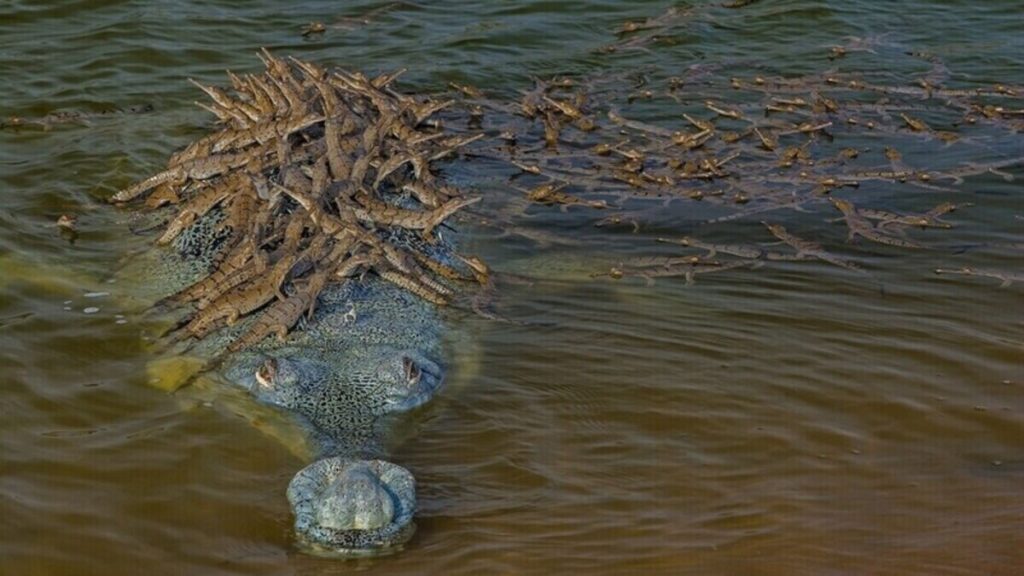Meet the Father Crocodile Carrying 100 Babies on His Back—It’s Mesmerizing

Imagine drifting along a calm river at dawn, mist rising gently off the water, when suddenly—there it is. A four-metre-long crocodile, slicing through the surface like a prehistoric submarine, and atop its ridged back? Not one or two, but a hundred baby crocodiles, perfectly balanced like little scaly passengers on a slow-moving barge.
No, this isn’t a scene from a David Attenborough documentary or some computer-generated wildlife fantasy. It’s an actual moment captured by Indian wildlife photographer Dhritiman Mukherjee—an image that leaves you momentarily stunned and utterly spellbound.
Why this is such a rare and beautiful moment ?
The creature in question is a male gharial, a crocodilian that’s both magnificent and on the brink of extinction. With their distinctively long, narrow snouts and rows of needle-sharp teeth, they look more like creatures dreamed up in a bedtime story than anything you’d expect to see in real life. And thanks to these unique jaws, the typical crocodile parenting trick—carrying hatchlings in the mouth—just isn’t an option for them.
So what do gharials do instead? They carry their babies on their backs, cruising through India’s sacred rivers like living ferries. This male, likely the father of many if not all of the wriggly brood, is doing his bit to keep the next generation safe from the swift currents and lurking predators.
It’s a striking and rare scene, not only because of the visual impact but because of what it represents: hope for a species that desperately needs it.

Fatherhood in the wild, gharial-style
Unlike their reptilian cousins, male gharials are unusually involved when it comes to parenting. While they might not knit booties or read bedtime stories, ferrying your kids through crocodile-infested waters has got to count for something.
There are fewer than 700 adult gharials left in the wild, with a significant chunk of them—around 500—clinging to survival in the Chambal River sanctuary. Every successful breeding season matters. Every tiny hatchling matters. And when a male steps in as both bodyguard and boat, it gives conservationists a glimmer of optimism in what’s otherwise a very fragile picture.
As Patrick Campbell, a reptile curator at the Natural History Museum, points out, these creatures face ongoing threats from habitat loss and human activity. At full size, a male can weigh nearly a tonne, but it’s the invisible pressures—pollution, riverbed disruption, and reduced fish stock—that are truly pushing them to the edge.

One photo, a thousand stories
Mukherjee’s photograph isn’t just beautiful—it’s important. It was shortlisted for the prestigious Wildlife Photographer of the Year competition, and not just because of the technical prowess involved. There’s something deeply moving about it, something that tugs at you.
Because in that image, you don’t just see a reptile doing its biological duty. You see resilience. You see the incredible lengths nature will go to in order to protect its own. And you’re reminded that wildness isn’t just about survival of the fittest—it’s about clever adaptations, unlikely tenderness, and unexpected beauty.
In a world that often feels noisy and rushed, this image asks you to slow down and look closer. To appreciate the quiet effort of a father doing his part. To remember that even creatures we might once have feared have a story worth telling—and protecting.
So next time someone tells you crocodiles are cold-blooded and indifferent, tell them about the gharial with a hundred babies on his back. Trust me—it’ll change how they see the wild forever.
Loading...

